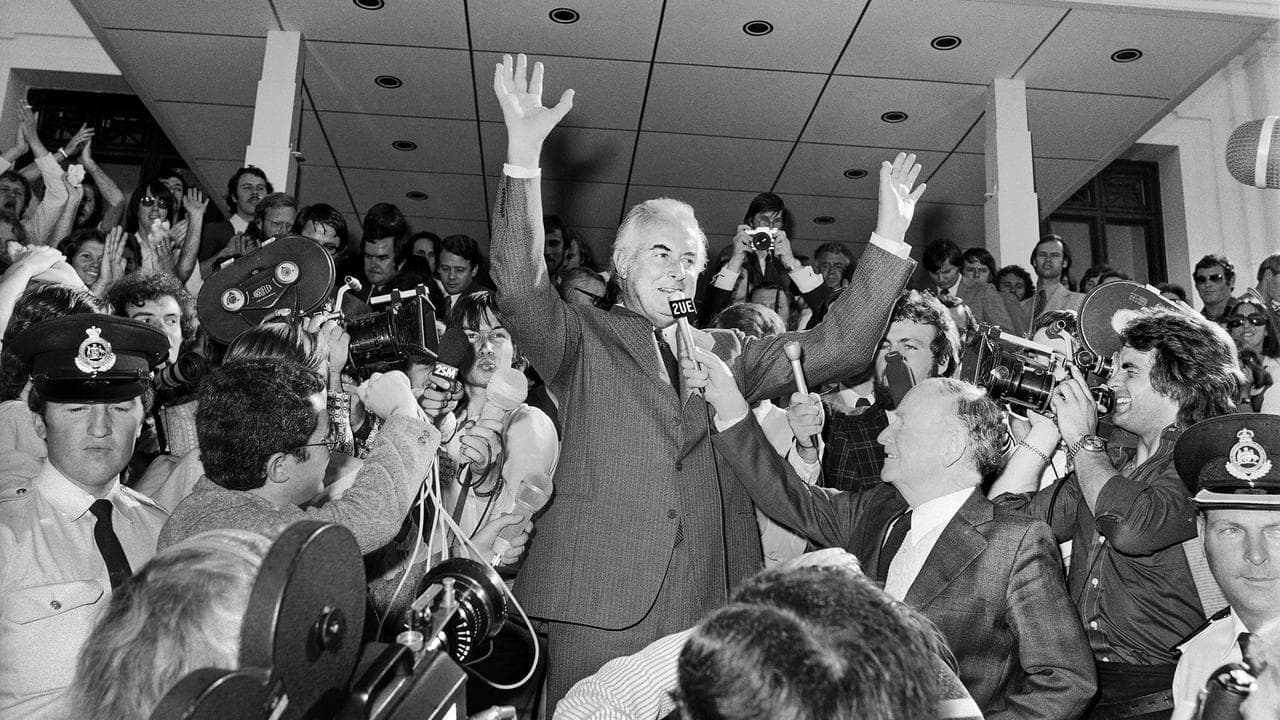WHAT WAS CLAIMED
The 1975 Lima Declaration required Australia to cut its manufacturing capabilities by about 30 per cent.
OUR VERDICT
False. The UN declaration was not legally binding and did not require Australia to cut manufacturing.
AAP FACTCHECK - A baseless claim that a 1975 UN declaration forced Australia to slash manufacturing by 30 per cent has resurfaced online.
Experts say the Lima Declaration, signed three decades ago, was not legally binding and did not require Australia or any other signatory to reduce their manufacturing capabilities.
The claim appears in a Facebook post featuring a picture of former prime minister Gough Whitlam with the title: "What Killed Manufacturing in Australia?"
"Most may not know this, so I will try and explain it the best I can. Sunday history lessons," the caption said.
"In 1975, with no public consultation, the ALP government of Gough Whitlam signed Australia up to the United Nations inspired Lima Declaration which required Australia to reduce its manufacturing capabilities by around 30% and to commit to import that same amount from other preferred countries.
"The Declaration also mandates that we import as much primary produce as we can consume; such as fruit, meat etc."

UN member states, including Australia, voted for the UN Industrial Development Organization (UNIDO) to adopt the Lima Declaration and Plan of Action on Industrial Development and Cooperation as its policy at a conference in Peru in 1975.
Several sections (clauses 27 and 59b) stated that developed countries, such as Australia, should change their policies to support the expansion and diversification of imports from developing countries.
The declaration also said (clauses 59c and 61d) that developed countries should develop policies to transition less internationally competitive industries into more viable production or economic sectors, leading to structural adjustments and the redeployment of productive capacities to developing countries.
In response to a question on notice about the document in 1986, then-industry minister Barry Jones said: "Australia has not signed the Lima Declaration."
"It is not an international instrument requiring either signature or ratification," he added.
The minister explained that the Australian delegation leader expressed specific reservations or interpretations regarding the aforementioned paragraphs and several others in the Lima document in 1975.
Mr Jones also said that since the declaration, a more challenging economic environment and increased competition from developing countries had led the government to revise its manufacturing policy.
"That policy is now aimed at making the manufacturing sector more internationally competitive, export-oriented, flexible and innovative, and capable of operating in the longer-term with minimal levels of government assistance and regulatory intervention," he said.

Experts agreed that the Lima Declaration was not legally binding, as it was neither signed nor ratified by any nations, and lacked an enforcement mechanism.
Patricia Ranald, an expert in globalisation and trade agreements at the University of Sydney, said claims that industrialised countries, such as Australia, were required to preference developing countries in trade were "completely false."
"Like all UN agreements, it was reached through open negotiations by the 190-odd UN member countries, and was never a legally binding agreement, but consisted of aspirational recommendations only," she told AAP FactCheck.
Dr Ranald said it was wrong to attribute any decline in manufacturing or increase in agricultural imports since the 1970s to such multilateral declarations.
"Changes in Australian manufacturing industries and increased imports more generally are linked to successive governments reducing Australian tariffs from the late 1970s and bilateral and regional trade agreements from the 1990s," she said.
Andrew Walter, an international relations expert at the University of Melbourne, said the declaration was part of the "new international economic order" pursued by developing nations, which is generally regarded as having failed.
"It was only ever symbolic and was never a significant constraint on the policies of the developed countries," he told AAP FactCheck.
Caroline Henckels, an expert in public international law at Monash University, said that multilateral declarations are not binding under international law.
She said they don't impose obligations, but rather express goals and aspirations, as reflected in the use of the word "should" in the Lima Declaration.
"Even if it was a treaty (rather than a declaration) containing obligations and thus binding on its signatories as a matter of international law, it would not be enforceable in the absence of provisions establishing a mechanism to resolve disputes and a process to enforce any obligations arising as a result of a finding of non-compliance by a body established to adjudicate disputes," Dr Henckels told AAP FactCheck.
Australia was a member of UNIDO in its current form until 1997, and the agency's general conference adopted a new Lima Declaration in 2013.
AAP FactCheck is an accredited member of the International Fact-Checking Network. To keep up with our latest fact checks, follow us on Facebook, Instagram, Threads, X, BlueSky, TikTok and YouTube.












